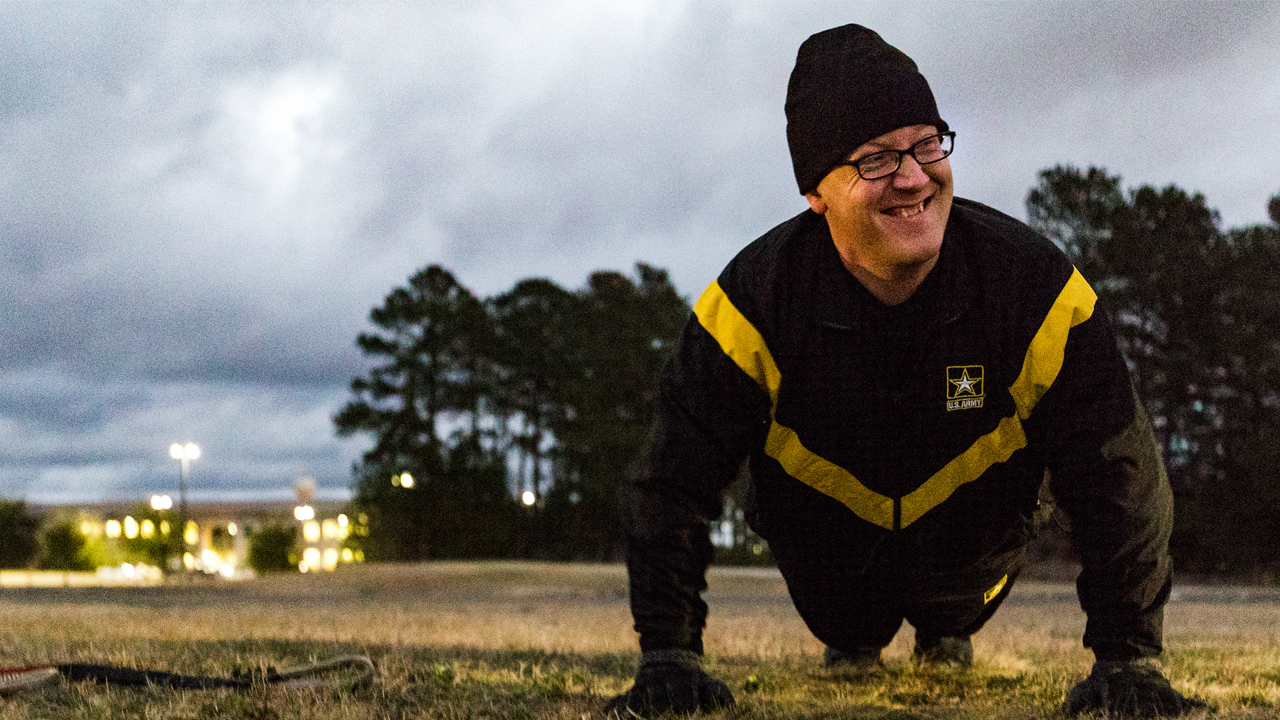

While announcing new changes to the Army Combat Fitness Test, Army leaders implored soldiers to just take the damn test already.
Sgt. Maj. of the Army Michael Grinston and Maj. Gen. Lonnie Hibbard, the commander of the Army Center for Initial Military Training, told reporters on Monday that the latest version of the fitness test, the Army Combat Fitness Test 3.0, would go into effect on April 1. (No, this isn’t an April Fool’s joke.) However, the Army still needs more data to determine if the changes are working, and to do that, soldiers actually need to take the test and record their scores in the digital training management system (DTMS).
“It’s extremely important for us to know and get the information that we can pull and say, ‘Do we have the right version? Are we going in the right direction, according to data?’” Grinston said.
The new changes to the test, first reported in February by Task & Purpose, include making the plank a permanent substitute to the leg tuck exercise, removing standards specific to military occupational specialties (MOS), and putting soldier’s scores on a tiered percentile system separated by gender.
During the roundtable, Hibbard explained that all soldiers, regardless of gender, still need to meet the minimum score of 360 points. Both he and Grinston insisted that the ACFT was still a gender-neutral test, but Hibbard echoed what was included on the slides obtained in February, which said that the Army “has to account for” the “physiological difference between men and women” in order for it to be approved by Congress, who raised concerns with the test last year.
After soldiers receive their score, they are placed in a percentile rank within their gender which is identified by color: platinum for the top one percent, followed by gold, silver, bronze, and green. For things like promotion points and evaluations, soldiers’ scores will be identified by the percentile bracket they fall in instead of the number they scored. Instead of saying a soldier scored a 520, for example it, would only say the color bracket their score was in.
“This removes inherent biases based on points,” Hibbard explained. “And then we look at their category based on their gender and we know they’re in the top 10 percent.”
Currently, soldiers are expected to train for and take the ACFT, though their scores won’t officially count until next spring. Still, Grinston and Hibbard said it’s important that soldiers’ scores be recorded so the Army can determine what is and isn’t working.
And there have been several things that soldiers and advocacy groups say aren’t working. The leg tuck was immediately singled out as one of the most difficult exercises, and one that women disproportionately failed. Soldiers have also raised concerns about access to equipment and how the Army’s height and weight standards, viewed by some as an outdated system, could hurt soldiers’ abilities to excel at the ACFT. In November, the Service Women’s Action Network said the ACFT could do “irreparable damage to the diversity of talent in our Army.”
But Army leaders have stuck by the test, stressing that soldiers just need to properly train and familiarize themselves with the requirements to be successful. Now the problem seems to be that not enough soldiers are recording their test results more than once, or at all, for leaders to have a good idea of if scores are improving.
In an article published on Sunday, Grinston wrote that “only 25 percent of the total Army has uploaded scores” from the ACFT into the DTMS. He added that only seven percent of soldiers have taken the ACFT more than once, and that women accounted for less than eight percent of testing data.
“The Army cannot (and should not) make decisions based on such limited information … There is no excuse for leaders not training for and administering the ACFT, or for not uploading the test results into the DTMS,” he said. “The Army needs that data.”
On Monday, Grinston said part of the problem is due to disruption from the novel coronavirus (COVID-19). The Army had to “pause everything,” Grinston said. And things didn’t slow down throughout 2020: The National Guard was called up to help with protests following the death of George Floyd; assist with distributing COVID-19 vaccines and testing; respond to various natural disasters around the country; and secure the Capitol building following the attack on Jan. 6.
Another possible explanation for a lack of data, Grinston said, is that soldiers are taking the test but they aren’t putting their scores into the system.
“I don’t even know how many times I’ve taken the ACFT, and not all of those are in the digital training management system,” he said. “So I believe there’s a large portion of soldiers that have taken it and they just need to put it in the system of record … so we can actually see it, and then use an informed decision.”
While Grinston has made it clear that he’ll update the ACFT as many times as necessary to get it right, he said the Army doesn’t expect to make any more changes on the test this year after the ACFT 3.0 is implemented on April 1.
“If we can get the whole Army taking this and entering into the DTMS, by the end of this fiscal year it will help Army senior leaders make the necessary decisions for policy and implementation,” Hibbard concluded. “So they’re truly informed decisions on one Army standard.”
In fact, Grinston is so intent on getting more scores recorded that he decided to have a little fun with it:
Happy testing, and may the scores be ever in your favor.
Featured image: U.S. Army Spc. Damian Drew, USARCENT, performs Hand-Release Push-Ups (HRP), USARCENT headquarters, at Shaw Air Force Base in Sumter, S.C. on Jan. 28, 2021. (U.S. Army/Spc. Amber Cobena)
